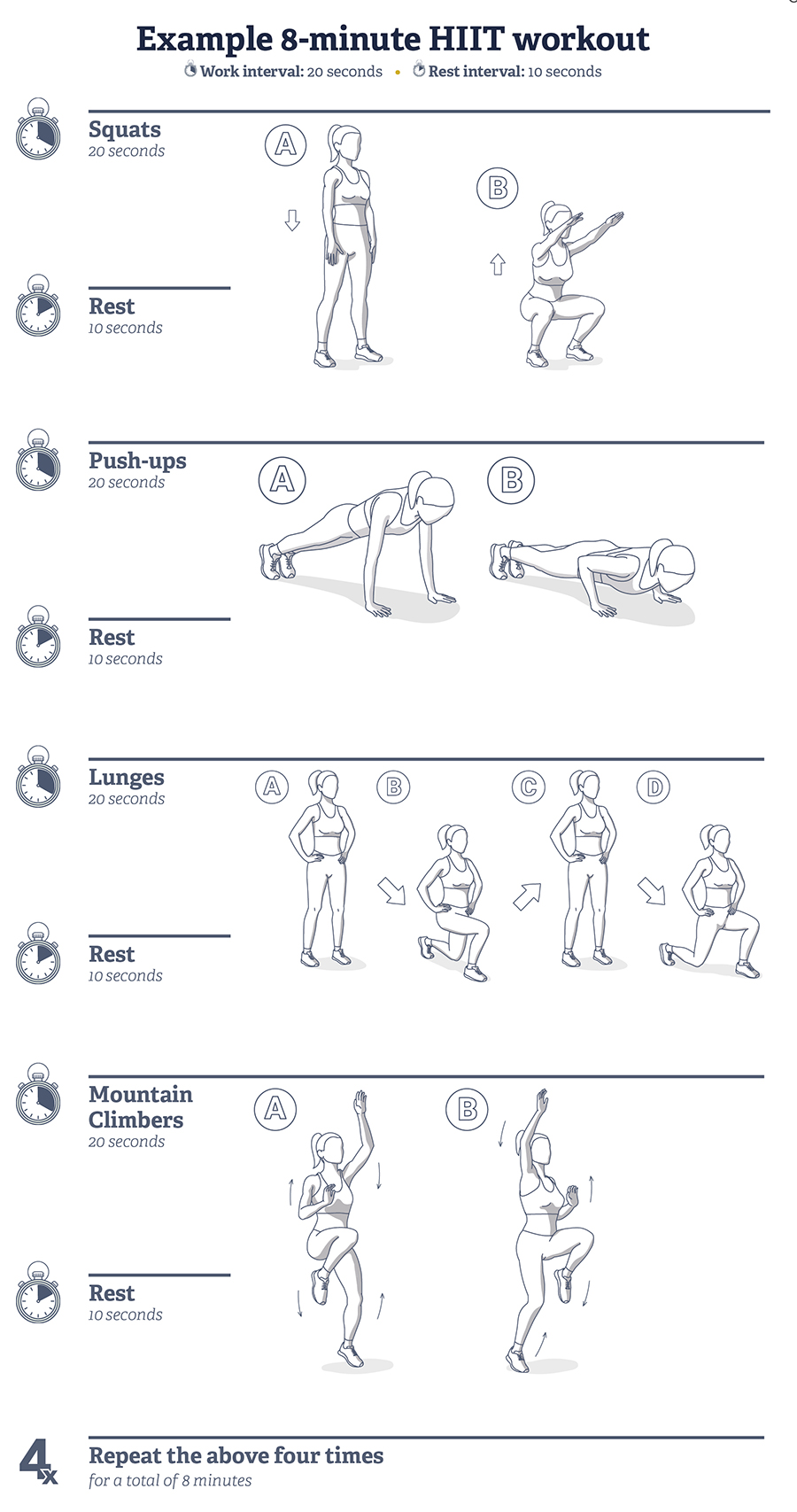The Sweet Life of Bettajelly
Exploring delicious recipes, fun food trends, and lifestyle tips that bring joy to your everyday.
HIIT Happens: Why Short Workouts are the New Long Run
Discover why short, intense workouts are taking over traditional long runs. Unleash your fitness potential with HIIT today!
The Science Behind HIIT: How Short Bursts of Exercise Deliver Big Results
High-Intensity Interval Training (HIIT) has gained immense popularity in recent years, and for good reason. This training method involves alternating between short bursts of intense exercise and periods of rest or lower-intensity activity. Research has shown that HIIT can be remarkably efficient, leading to improved cardiovascular health, increased metabolism, and significant fat loss. According to studies, just a few minutes of high-intensity workouts can provide benefits comparable to traditional endurance training, taking far less time to achieve similar or even superior results.
The underlying science of HIIT lies in its ability to stimulate the body's energy systems and increase the afterburn effect, formally known as excess post-exercise oxygen consumption (EPOC). During the intense intervals, your body taps into both aerobic and anaerobic pathways, leading to greater caloric expenditure both during and after the workout. Notably, HIIT has been found to enhance insulin sensitivity and improve metabolic health, making it an excellent choice for those looking to optimize their fitness levels in a time-efficient manner. As a result, incorporating HIIT into your routine can lead to extraordinary results with minimal time investment.

HIIT vs. Traditional Cardio: Which Workout is Right for You?
When it comes to choosing between HIIT (High-Intensity Interval Training) and traditional cardio, it's essential to consider your fitness goals and lifestyle. HIIT involves short bursts of intense exercise followed by rest or low-intensity periods, making it an efficient way to burn calories and improve cardiovascular fitness in a shorter amount of time. On the other hand, traditional cardio, such as jogging or cycling at a steady pace, allows for longer workout sessions and can be more accessible for beginners or those seeking a lower-intensity option.
Each workout style has its unique benefits. For instance, if you're crunched for time and looking for a workout that maximizes calorie burn, HIIT could be your best bet. However, traditional cardio can be easier to maintain over longer durations, promoting endurance and mental focus. Consider trying both methods and see which one you enjoy more, as personal preference plays a significant role in sticking with a fitness regimen. Remember, the right workout is the one that fits your individual needs and keeps you motivated!
5 Common Myths About HIIT Workouts Debunked
High-Intensity Interval Training (HIIT) has gained immense popularity in the fitness world, yet many misconceptions surround this effective workout strategy. One of the most prevalent myths is that HIIT workouts are only suitable for advanced athletes. In reality, HIIT can be easily adapted to accommodate all fitness levels. Beginners can start with low-intensity intervals and gradually increase their intensity as their fitness improves, making HIIT a flexible option for anyone looking to enhance their fitness journey.
Another common myth is that HIIT workouts can only last for 20-30 minutes to be effective. While this is a typical duration for many HIIT sessions, they can vary widely in length and structure. Some effective HIIT workouts can be completed in as little as 10 minutes, allowing for a quick yet effective training option for those with busy schedules. Additionally, the benefits of HIIT, such as increased metabolic rate and improved cardiovascular health, can still be achieved with shorter or longer sessions, depending on individual goals and preferences.